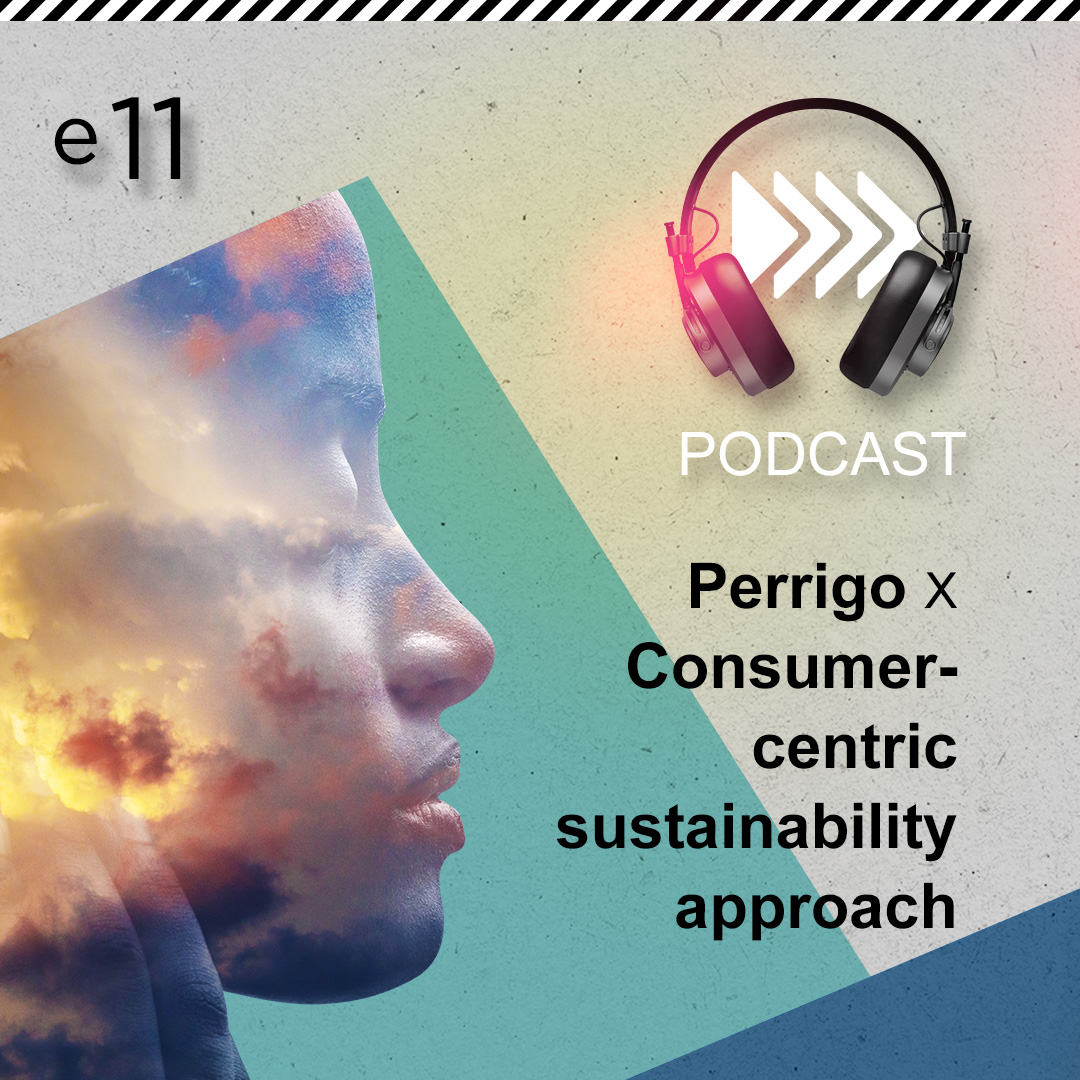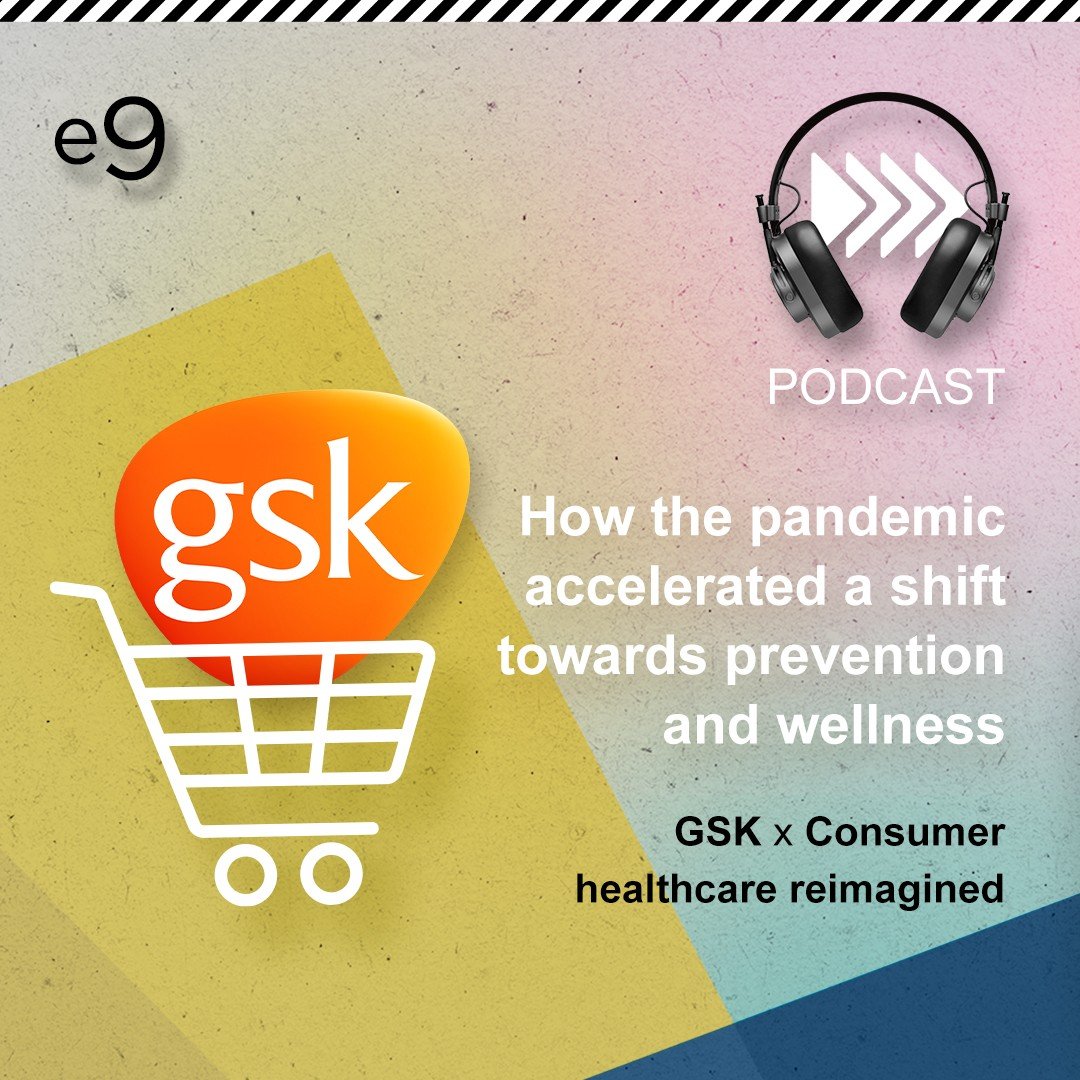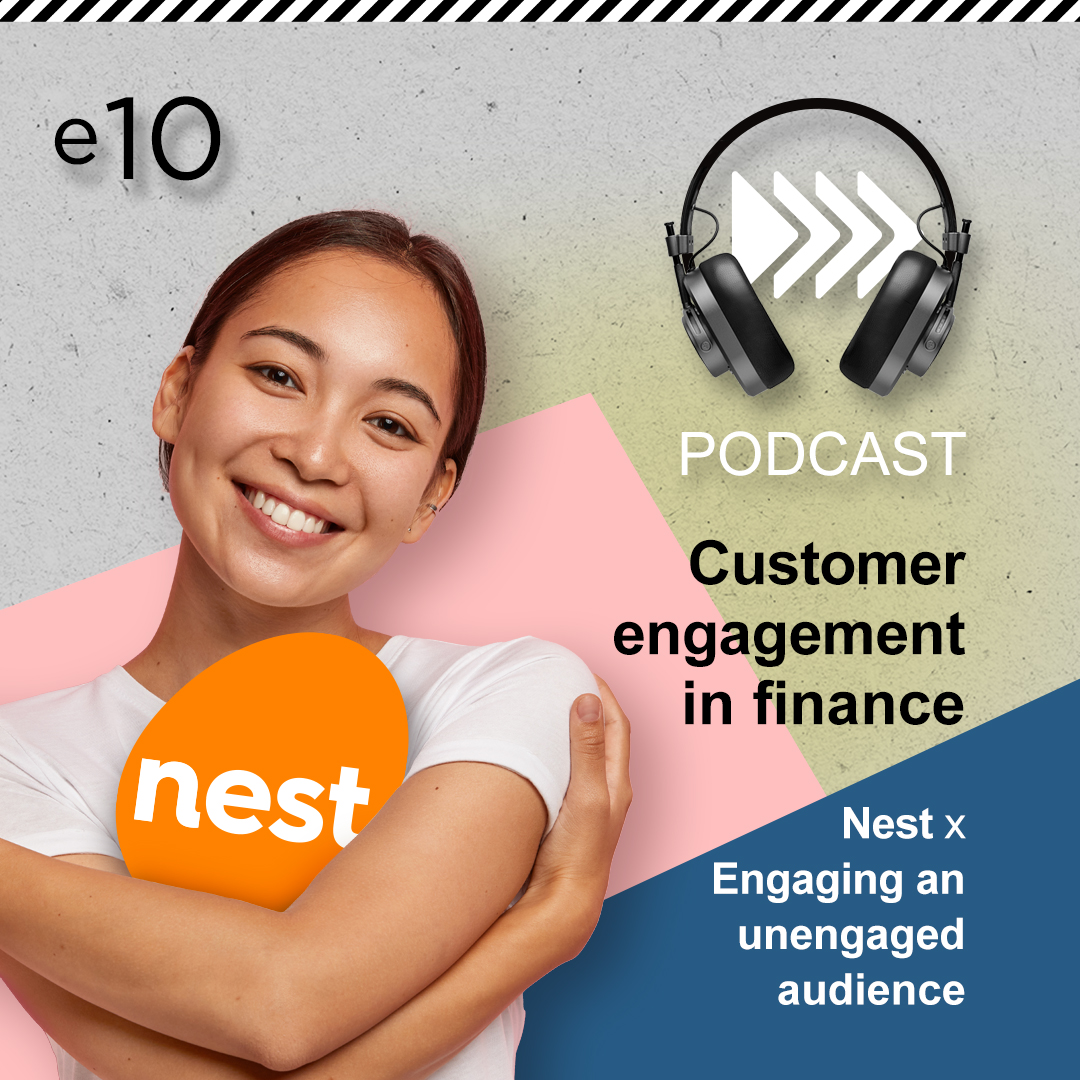Script
Farrell: The last roughly year and a half has changed both business and consumer behavior in many ways. But few industries felt the impact more than healthcare. The COVID-19 pandemic demonstrated to many that health is not a luxury item. It exposed how different groups were perhaps underserved by healthcare, and showed how vital some groups of people, like healthcare workers themselves, were to managing our health. In today’s show, we connect with GSK, a brand at the frontlines of consumer healthcare, to understand how the pandemic has changed customer behavior, which changes they expect will stick, and what the pandemic has taught us about consumer healthcare more broadly.
Deb: My name is Deb Monahan. I’m the Director of Shopper Insights and Capabilities at GSK Consumer Healthcare. We are very much focused on understanding shoppers’ needs and expectations across our categories, and working with our retail partners to identify and deliver product solutions to meet our shoppers’ needs. So, we’re very focused on the shifts in health and wellness, especially now post-pandemic, and how we need to make adjustments in our messaging, areas for new product development, and the services and solutions that we offer. I think pre-pandemic, as we think about shopper needs overall relative to our categories, aside from more preventative products within vitamins, minerals and supplements, or even as we think about pre- and pro-biotics for example, the majority of OTC purchases were made to treat conditions, more reactive in nature.
Farrell: GSK Consumer Healthcare is a division of the company that focuses on everyday health products you might find at the neighborhood pharmacy, or in the health isle at the grocery store. Think things like vitamins and supplements, or the sorts of medicines you might want when you have a sore back or a minor rash, that sort of thing. Most of these products would be sold over the counter, or as Deb refers to it: OTC.
Deb: And so, help with diagnosing and treating conditions was paramount. Shoppers were also interested in education and anything that could help match them with the optimal product. And so, I think, as we think about treating a condition in that more reactive space, also followed by ease and finding the product, and at the best price.
Farrell: One of the impacts of the pandemic was to accelerate transient behavior that were already well under way. Research from McKinsey has shown that some technology adoption leapt ahead by five years over the span of a few months. Video conferencing, for example, boomed, with Microsoft Teams recording an increase of nearly 900% in the first five months of the pandemic, and Zoom recording nearly 700% of growth. And these shifts also extended into healthcare. People started looking at health and well-being in a very different way. Before the pandemic, Deb says the company saw people shopping in a way that was more reactive, buying in response to a specific health need. But the pandemic pushed more proactive behavior, focused on self-care.
Deb: We did see a major shift towards more prevention and wellness products and solutions. We saw an openness to consumers wanting to explore alternative treatments, and we now say that consumers are using a broader range of solutions, from diagnostics to natural solutions. They’re also thinking about exercise and meditation, and we’re also now digging into understanding the impact as well on mental health. So not just the physical but also the post-pandemic impact that it made on consumers’ moods.
Farrell: The pandemic has shifted consumer healthcare towards prevention. And while the devastating consequences of COVID-19 are obvious, this shift towards prevention might be a silver lining, since research has shown that each dollar spent on OTC medicine saves the US healthcare system approximately $7. That adds up to $146 billion in annual savings in the US alone. So, if people are actively seeking a more proactive health-focused lifestyle, the brands and businesses providing those products need to adapt their offer too.
Deb: We are taking into account this shift to more prevention-type products. So, it’s definitely influencing how we’re going to market and thinking about new products. But we also see that our tone and messaging and visuals that we’re using in some of our shopper materials and some of our advertising is really focusing on more encouraging tones. Because we need to understand the world around us has forever changed, and the shoppers’ journey has shifted, and some of that more aspirational content is what they are seeking.
Farrell: The last year and a half, there was a torrent of news, most of it negative. And people may be understandably overwhelmed. These encouraging tones that Deb’s talking about cover not only more inspirational messages for those affected by the so-called info-demic, but also messages that connect with their customers on a human level, not just as consumers or shoppers. The question with all of these changes is: will they last? For all the talk of the ‘new normal’, isn’t it possible that as lockdowns end and as life goes back to something more closely resembling what it was before the pandemic, these shifts in behavior could also go away? Before the pandemic, research had shown that Millennials see access to tele-health as an important option, and other research has shown that once patients participate in tele-health programs, they prefer the convenience. The US centers for disease control and prevention found 154% increase in tele-health visits in March 2020, compared to the previous year. Now these were the early days of the lockdown in most states, where in-person visits were discouraged. Things have opened up a lot more since. So, what does the future hold? It may prove difficult to put the genie back in the bottle, now that so many people have had a tele-health experience.
Deb: From everything we can see now, with our research and also looking at syndicated sources, we are seeing this behavior very much sticking. We’re seeing that reinforcement of people wanting to live a healthier life, they don’t want to be caught off guard again, very many consumers felt vulnerable by the pandemic, that they didn’t have the right solutions, the right healthcare products for their families. And so, we saw a surge in these categories, and just awareness of living a healthier life and being prepared for that.
Farrell: As we mentioned earlier, the pandemic accelerated the adoption of some technology. While the offline world, the brick-and-mortar shopping, paused, online shopping exploded. According to IBM’s Retail Index, the pandemic accelerated e-commerce adoption by five years. Many people turned to online shopping for the first time, with a 12.2% growth for new online shoppers aged 65 and up. The same goes for healthcare, where research by WSL has shown nearly half of people have bought something online.
Deb: Obviously we know consumers are working, shopping, socializing and educating themselves now in a more virtual world. And as they navigate this virtual reality, their expectations for convenience and speed and personalization have accelerated. They are also seeking this seamless, frictionless living and shopping. And so, we have to know, as a manufacturer and a supplier of health care products, as well as from our retailer partners, how to deliver on these expectations. Convenience and speed are the new value. We also know that 65% or so are shopping more online than they have in the past. And so overall, we need to meet these expectations, again with products and solutions. We are definitely expanding online offerings and solutions, and really thinking about that digital shelf and how we need to create that full omni-experience for our shoppers.
Farrell: Deb also said that they had seen people’s in-store behavior change too, which means they and their retail partners need to rethink how to set up the store.
Deb: I do think that in-store expectations have also shifted. We’ve seen and heard through some of our research that shoppers today in-store aren’t doing the browsing they used to do. So that sea of products and how we’re organizing aisles today may not work, as we continue to address the needs of consumers in this post-pandemic world. So, I think we need to help our customers and partner with them, to reshape and rethink that store environment.
Farrell: There was time when the mantra heard across the business world was: “Every business will be a digital business”. But consultancy firm Accenture recently made a novel change to this, by claiming that “every business will be a health business”. All firms will have to focus on health even after the coronavirus outbreak ends.
Deb: We have already seen the shift, even with a few of our major retailers, by getting into the primary-care business. I can see many more customers getting into this area, building out their clinics, and as we think about CVS with their health hub, really delivering broader solutions and building out the capabilities with that. So, I say yes, from a retailer perspective. But I also think that tech companies are now merging and collaborating with healthcare companies to bring that virtual experience forward. And so, as we think about these sectors of the business, I do see an expansion into other areas and their focus on healthcare.
Farrell: Before we let Deb go, we wanted to know if GSK had learned anything larger from the pandemic experience. Beyond the digital shift and changes in shopper behavior, was there anything else they learned that was relevant to consumer health?
Deb: So, aside from all of the COVID-19 research and understanding what shipped from a consumer and shopper dynamic, what also was brought to light for us is the misrepresented or under-represented I should say and underserved communities. Because we understand that not being able to understand these communities in a bigger way, and also do we think about the caretakers, the impact that COVID-19 had on caretakers… these are some areas that we’re now starting to dig into a bit more.
Farrell: GSK is looking into how to serve communities that in their view have been underserved by the industry. These could be caretakers, ethnic minorities, the uninsured or underinsured, low-income shoppers or those with disabilities. And this extends not just to people with physical disabilities; there are those with mental health issues too, many of whom might have seen their conditions exacerbated by the isolation of lockdowns and poor access to professionals. Deb says there is a broad set of communities that GSK wants to understand better. And finally, we wanted to know what the future held. What is GSK’s Consumer Health focusing on now?
Deb: As a consumer healthcare company, how do we help them get back to living – and things won’t be the same – but how can we make it easy for them to find the right solutions, help protect their families, help them on their wellness journey? And so that’s something that’s very top of mind for GSK right now: how do we help – as we get back to that normal way of living – what is the right tone, what is the right messaging, what does that partnership with our customers look like?
Farrell: So, the pandemic has made the pandemic a more salient aspect in most people’s lives. We’re focusing more on prevention and proactive health. We’re also moving our healthcare online, and spending less time browsing the stores. GSK is looking for ways to track these changes in behavior, and adapt their products and services to meet those changes. They’re also looking for ways to bring their products to underserved and undervalued groups, and helping all their customers get back to a normal life.
This episode was written, edited and produced by Katia Pallini and me, Farrell Styers. If you want to learn more about InSites Consulting, their work with GSK, or find out more about anything you’ve heard in this or any other episode, just go to insites-consulting.com/podcasts.
Thanks to Jeff Haselum for editorial support. A special thanks to Deb for taking the time to talk to us. And of course, thank you, for listening.
If you want to find out more about InSites Consulting and our work, just go to insites-consulting.com/podcasts, or subscribe to our podcast on Soundcloud or Spotify.





